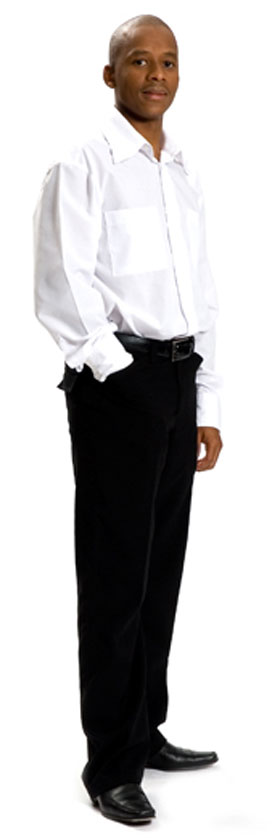
Sandile Ngcobo, the CSIR scientist responsible for developing the world’s first digital laser, gave what is probably the shortest speech in the history of press briefings at the announcement of the breakthrough this week. He stood up in the small, swelteringly hot room at the National Laser Centre, thanked the CSIR for giving him the opportunity to undertake the research, said the discovery was exciting, and sat down again, to journalists’ applause.
Speaking to the Mail & Guardian on Wednesday, he was equally self-effacing. Originally from Pietermaritzburg, where his parents and brothers still live, the 33-year-old Ngcobo is a full-time employee at the National Laser Centre, part of the CSIR since 2003, and works in the mathematical optics unit.
At the same time, he is a doctoral candidate at the University of KwaZulu-Natal, where he did his undergraduate and honours degrees. He took a brief hiatus from the university to do his MSc at Stellenbosch University. But he notes: “I’m a full-time employee of the CSIR. It’s not like I’m just a student.”
But the breakthrough — how to control the size and shape of a laser beam using a computer — forms part of his doctorate, which “is on controlling the light inside lasers”, he said.
In a traditional laser, the beam is shaped inside a box with two mirrors, the curvature of the mirrors determining the size and shape of the beam. If a researcher, company or manufacturer requires a different beam, they either have to replace one of the mirrors in the laser or manipulate the beam once it comes out of the laser using a spatial light modulator. Lasers cost thousands of rands, and altering them is a lengthy and costly exercise.
Ngcobo’s research has shown it is possible to alter the beam from inside the laser by replacing one of the mirrors with a computer interface. The research was published in the journal Nature Communications last month.
The computer interface is “like a television which displays the image you’re watching”, said professor Andrew Forbes, the chief scientist and research group leader in the mathematical optics group. “The basic idea is to create the desired hologram digitally,” which acts as a spatial light modulator.
To build a laser, you require “a medium that can amplify light, something to excite the medium and a box made of two mirrors that bounces the light backwards and forward. We replaced one of the mirrors with our little television set.”
Forbes said the intellectual property belonged to the CSIR, although under South African law, part of it belonged to the inventor. Igor Litvin and Liesl Burger of the mathematical optics unit were also involved in the development of the laser.
Ngcobo sounded surprisingly calm about finishing his doctorate, saying he was just going to collect the papers he had previously published. The digital laser is also the second patent he has been responsible for.
Told about the adulation he was receiving about the laser, and the fact that many were saying someone should “give the man a Bell’s”, he chuckled with embarrassment: “But I don’t drink.” — (c) 2013 Mail & Guardian
- Visit the Mail & Guardian Online, the smart news source

